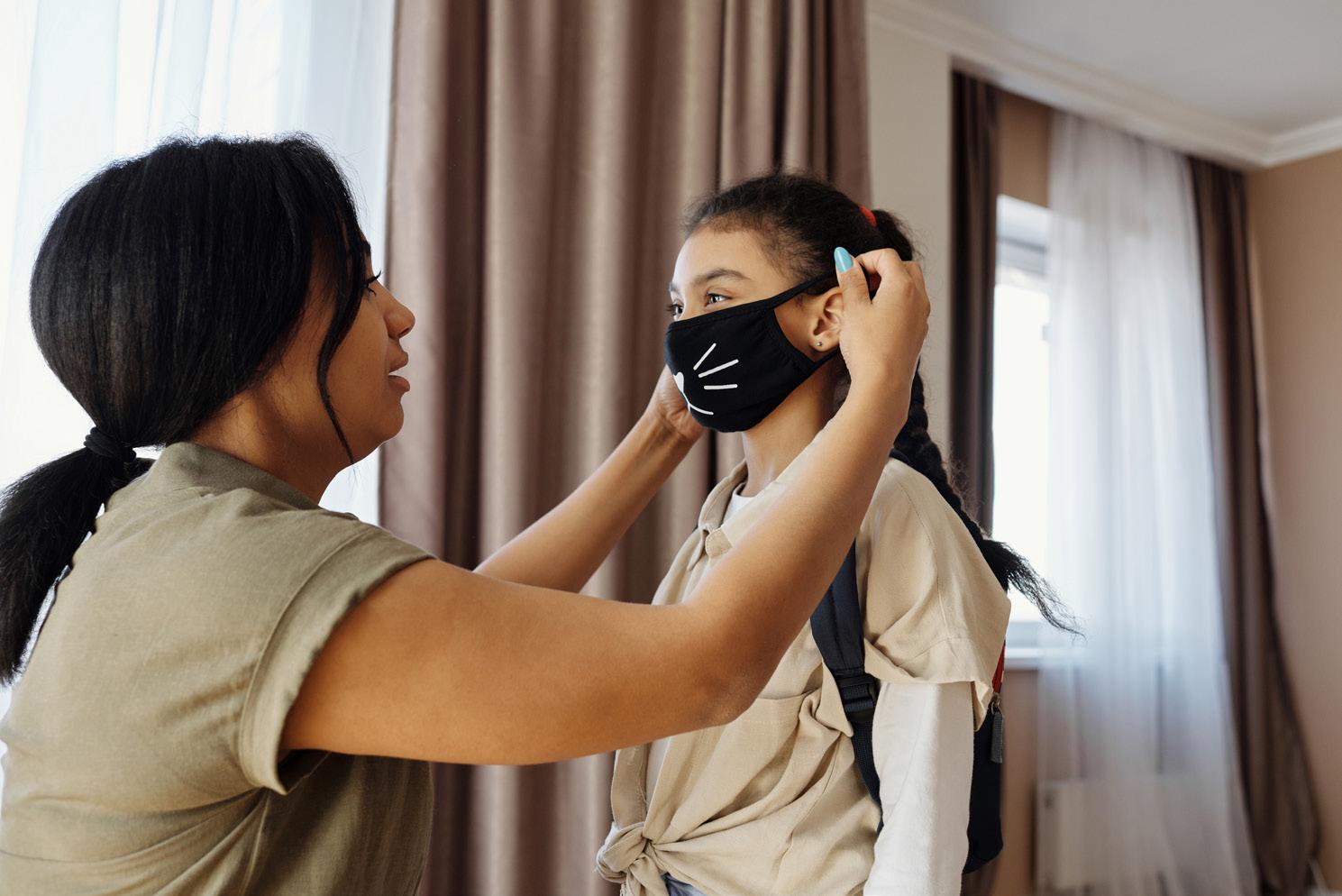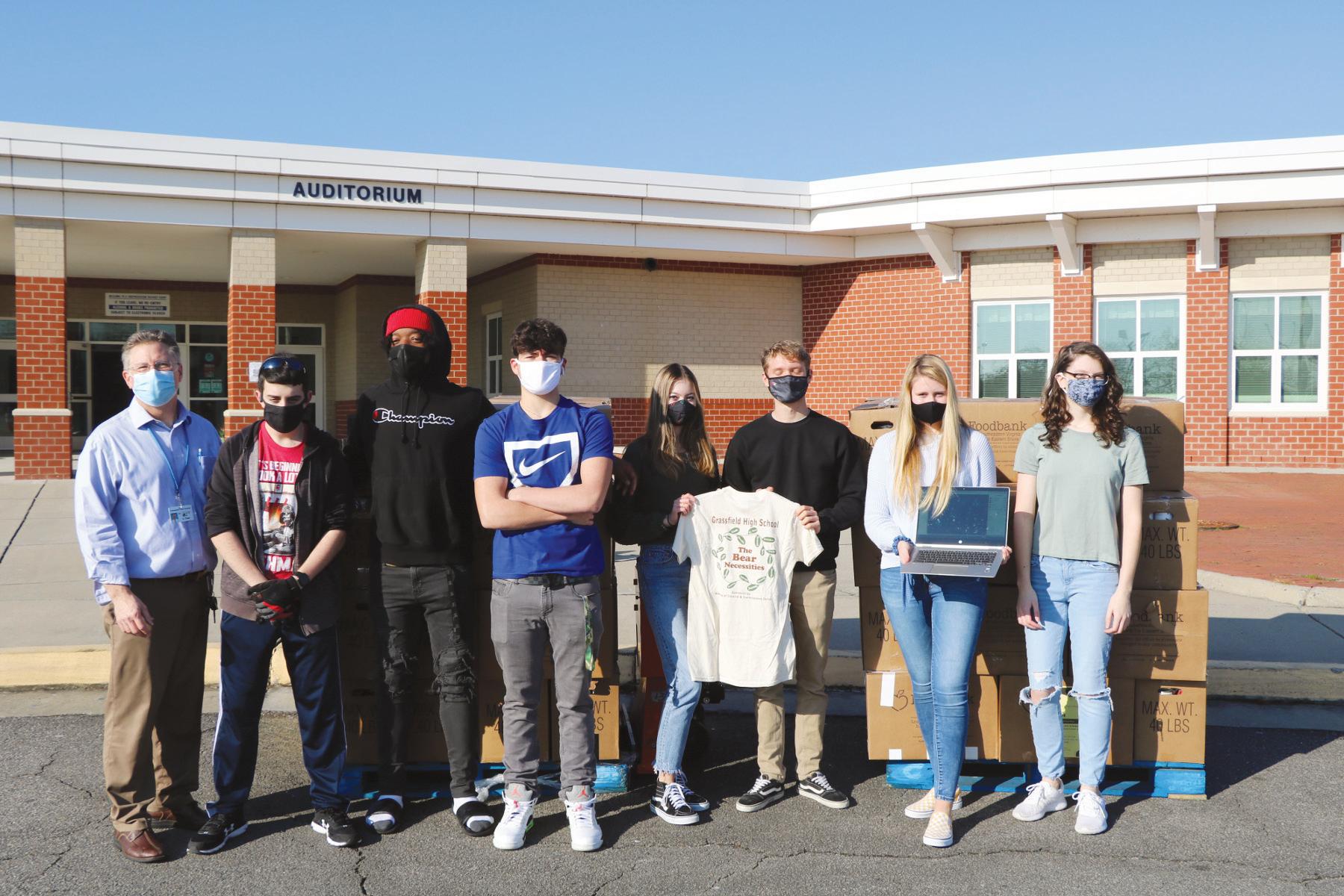
13 minute read
Retiring Single
2021 Updated Program with up to 12 - 15 months of rent assistance
for Austin tenants making a low-income & impacted by COVID-19.

» For more information, call 512.488.1397 or go to AustinTexas.gov/RENT

Retiring Single: 5 Strategies To Consider
(Continued From Page 01) And for women, it’s more likely to be the case. According to the Administration on Aging, 54% of older women are unmarried, as compared to 30% of older men.
“Retirement planning can be especially challenging for singles, who need to prepare without the decision-making and income support of a partner,” says Scott Pedvis, financial advisor, Wells Fargo Advisors. For those setting a course for solo retirement, Wells Fargo Advisors offers these five tips:
1. Create a fallback plan. Retirees commonly discover a gap between what they thought they’d need for retirement and what’s actually needed. And if you’re single, you may not have a second income stream to rely on should finances become unexpectedly disrupted.
Periodically review your investment portfolio and build backup plans. Such contingency planning could involve more emergency savings and more robust disability and long-term care insurance protection than couples. You could also choose to take a part-time job for extra income.
2. Build a network of advisors. With autonomy sometimes comes a reluctance to seek advice. Consider forming a team of trusted professionals, including a financial advisor, accountant, attorney and healthcare providers.
3. Count on loved ones—to a point. Friends and family can be a lifeline in good times and times of need. However, ensuring they don’t take advantage of your independent status or create serious financial burdens for you is essential. For example, you should take extreme care before turning over financial matters to others.
Stay actively involved and work with a trusted team to help make decisions in your best interests. Evaluate the possibility of engaging a corporate trustee to manage finances, should you become incapacitated.
4. Prepare key documents. According to Caring.com, more than half of American adults don’t have estate planning documents such as a will or trust. Don’t wait. Even if you’ve put some documents together, they may not ensure your wishes are carried out. Here are the key documents forming the foundation for most estate plans: • Will • Power of attorney (POA) for financial matters • Durable power of attorney for health care • Health Insurance Portability and Accountability Act (HIPAA) release authorization • Living will • Revocable living trust

To prevent confusion and misdirected bequests, carefully designate beneficiaries of IRAs, employer-sponsored retirement plans, insurance policies and annuities. Lay out clear directions for the distribution of remaining assets.
Also, don’t forget about digital assets and accounts. Will your executor or trustee have proper authority to access and manage those items? Talk to your attorney about keeping digital planning secure and upto-date. 5. Plan for change. Entering into a committed relationship could mean making adjustments. Look at your insurance coverage, emergency fund and future income plan.
Think about having a frank discussion with your new partner about how you’ll divide assets in the event of divorce or death.
If ex-spouses or children are in the picture, consider managing finances and estate plans separately. With the assistance of your financial advisor and estate-planning attorney, you can establish a basic estate plan, and, as appropriate, discuss other strategies for preserving wealth.
For more expert retirement guidance, visit wellsfargoadvisors.com. “Planning for retirement is part of the financial journey.
Key planning strategies can help you feel confident as you approach your golden years solo,” says Pedvis. (StatePoint)
Celebrate 401(k) Day
April Fool’s Day is just around the corner. Even in today’s socially-distanced environment, people are sure to attempt a few pranks to mark the day. As in normal years, the majority will be silly, some will be hilarious, while others will fall flat.
This year, try something different and celebrate 4/01(k) Day instead. To mark the occasion, Lincoln Financial Group is encouraging savers to test their knowledge on three common misconceptions about saving for retirement revealed in a recent survey of U.S. employees by Lincoln Financial and CivicScience: sider all options of your 401(k) platform prior to making a decision, the process for a rollover is typically very easy and brings multiple benefits. Instead of tracking investment selections, performance or statements for multiple accounts, for example, you’ll only have to monitor a single account.
“While there are certainly still some misconceptions when it comes to saving for the future, the majority of those surveyed understand the importance of not delaying saving for later in their careers,” said Aaron Moore, senior vice president, Retirement Plan Client Engagement, Lincoln Financial Group. “This is cause for celebration, as delaying saving for retirement can have a significant impact on future savings. This is another reason why we are focused on working with employers to educate their employees so they can achieve the retirement they envision.”
Tips to keep your celebration going
If you’re looking for more ways to celebrate 4/01(k) Day – and help set yourself up for a financially secure future – here are three tips to keep in mind:
1. Check your account. It might sound simple, but logging in regularly (try for at least once a quarter) can help ensure you’re on track with your savings goal. Be sure to use the calculators and projection tools your retirement plan offers.
2. Update (or create) a goal. When you have a goal to work towards, research shows you’ll be more likely to increase your contributions, and therefore, increase your savings.
• True or False: “Saving enough to meet the employer match is enough to keep me on track for a comfortable retirement.” This
one is (most likely) false! An employer match (if offered) is a good place to start, but if you really want to make sure you have enough of a nest egg to retire when and how you want, a good rule of thumb is to save at least 10 to 15 percent of your salary.
• True or False: “Paying down my student loan debt as quickly as possible is more important than saving for my retirement.” This can be true…or false, depending on your situation. While you should not delay saving for retirement, it’s a good idea to speak with a financial professional to determine how to strategize paying off debt while also planning for your future. You can also use free tools like the debt calculator found at LincolnFinancial.com to help you make a plan for paying off debt. 3. Meet with a professional. If your employer offers retirement consultants, schedule a meeting, or consider speaking with a financial professional, who can help you understand the full picture of your savings and where to focus your efforts.
For more resources, tools and calculators, visit LincolnFinancial.com/retirement.

• True or False: “I’ve thought about moving money from an old employer’s 401(k) into my current employer’s 401(k), but it seems like it would be too much of a hassle.” This one is false! While it is important to conA comfortable financial future is something to celebrate. So this April 1, take stock of your retirement savings, starting with your 401(k). (StatePoint)

10 Austin South Asian | May 2021 U.S. To Rush Vaccine Raw Materials, Anti-Covid Supplies To India
(Continued From Page 01)
But as recently as April 23, various U.S. government spokespersons would not say if the Biden administration would lift the embargo.
State Department Spokesperson Ned Price said April 22 that the “first obligation” was to the American people and added, “It’s in the interests of the rest of the world to see Americans vaccinated.”
But as calls grew for helping India, Secretary of State Anthony Blinken gave a hint April 24 that India may get the material to fight the pandemic surge.
He tweeted, “We are working closely with our partners in the Indian government, and we will rapidly deploy additional support to the people of India and India’s health care heroes.”
Horne said in the readout, “Just as India sent assistance to the United States as our hospitals were strained early in the pandemic, the United States is determined to help India in its time of need.”After some physicians had said that hydroxychloroquine could be a treatment for COVID-19, last April Trump had personally asked Prime Minister Narendra Modi to lift his ban on its exports and supply the drug to the U.S.
India sent about 50 million doses of HCQ to the U.S. and thanking Modi, Trump said, “We will remember it.”
Now the next president’s administration is remembering it, even though the emergency use authorization for HCQ’s in hospital settings in the U.S. was withdrawn and a huge cache of it sits unused while Modi’s decision was criticized in India.
India has been sharing its vaccine production with countries around the world, sending nearly 65 million doses to 86 countries.
Horne said, “Sullivan affirmed America’s solidarity with India, the two countries with the greatest number of COVID-19 cases in the world” and they both “resolved that India and the United States will continue to fight the global COVID-19 pandemic together.” The readout listing what India will receive, said, “The United States has identified sources of specific raw material urgently required for Indian manufacture of the Covishield vaccine that will immediately be made available for India. To help treat COVID-19 patients and protect front-line health workers in India, the United States has identified supplies of therapeutics, rapid diagnostic test kits, ventilators, and personal protective equipment (PPE) that will immediately be made available for India.”
The U.S. is also deploying an expert team of public health advisors from the Center for Disease Control and USAID to work with the embassy in Delhi, India’s Health Ministry, and India’s Epidemic Intelligence Service, the readout said.
USAID, which is the international assistance arm of the U.S., “will also quickly work with CDC to support and fast-track the mobilization of emergency resources available to India through the Global Fund,” it said. The Global Fund is an international collaboration to fight epidemics and serious diseases.
Looking ahead the readout said, “The U.S. Development Finance Corporation is funding a substantial expansion of manufacturing capability for BioE (Biological E), the vaccine manufacturer in India, enabling BioE to ramp up to produce at least one billion doses of COVID-19 vaccines by the end of 2022.”
Biological E, a Hyderabad-based company, is set to conduct phase 3 trials for a vaccine developed by Baylor University and Dynavax Technologies Corporation in the U.S.
At the March summit of Quad, Biden and Modi, along with Prime Ministers Yoshihide Suga of Japan and Scott Morrison of Australia, agreed on a joint plan to help other countries with vaccines that would be made in India with U.S. and Japanese finance and distributed using Australian logistics. Indian American Democratic members of the House of Representatives Raja Krishnamoorthi and Ro Khanna asked Biden to open the spigot on the excess vaccines for India, but from the readout of the Sullivan-Doval meeting it did not appear that, as yet there was an agreement on the vaccines.
Krishnamoorthi pointed out that the U.S. had about 40 million doses of the AstraZeneca vaccine, which is distributed in India under the Covishield brand name and had begun supplying some of it to Canada and the U.S.
He said that he would “strongly call on the Biden Administration to release millions of AstraZeneca vaccine doses to countries hardesthit by the spread of COVID-19, including India, Argentina, and potentially others.”
“I applaud the Biden Administration’s decision to put people over profits,” Khanna said welcoming the decision to give India the raw materials and other supplies, and added, “The Biden Administration can still do more, like give India our stockpile of AstraZeneca vaccines that won’t be used in the U.S.”
Biden’s chief adviser on the COVID-19 pandemic, Anthony Fauci, said on a TV program April 25 that sending vaccines to India was under consideration.
ANI adds: U.S. Secretary of Defense Lloyd J Austin III April 25 directed Pentagon to use its resources in order to provide material support to frontline Indian healthcare workers who are fighting against the second wave of COVID-19 pandemic.
“I’m deeply concerned about the COVID-19 outbreak in India, and today, I directed the @DeptofDefense to use every resources at our disposal, within our authority, to support US interagency efforts to provide India’s frontline healthcare workers with the materials they need,” tweeted Austin.
In a statement, Austin said that men and women of the Department of Defense stand by their Indian partners in the hour of need, and they are in this fight together.
“In the next few days, we will provide transportation and logistics assistance to deliver needed supplies to India, including oxygen-related equipment, rapid testing kits, and personal protective equipment,” read the statement.
“We are currently assessing the equipment we can both procure and draw from our own inventory in the coming days and weeks. We will continue to work closely with other U.S. agencies and departments, as well as with industry, to support our Indian partners in their effort to combat this outbreak,” added Austin.
Over three hundred oxygen concentrators were dispatched April 25 morning from New York to India, according to a Government of India official based in the U.S.
Air India’s A102 transported five tons (5,000kg) of oxygen concentrators as cargo from the John F Kennedy International Airport in New York and was scheduled to land in Delhi by April 26 afternoon.
“Apart from this consignment that’s has been shipped by Philips Atlanta, additional flights carrying oxygen concentrators will take off from San Francisco and Newark to transport hundreds of concentrators.
The next flight from the U.S. to India is scheduled to depart from Newark Airport and will land in Delhi on April 27,” the Indian Government official told ANI.
The official also noted that the Indian Mission in the United States and Air India are getting requests and inquiries from donors based in the United States to transport not just concentrators but also other medical supplies, including oxymeters.
Meanwhile, U.K. Prime Minister Boris Johnson announced April 25 that “vital medical equipment, including hundreds of oxygen concentrators and ventilators, is now on its way from the U.K. to India to support efforts to prevent the tragic loss of life from this terrible virus.”
The shipment is expected to reach India by April 27. Johnson recently cancelled his India visit due to a surge in the cases of coronavirus.
German Chancellor Angela Merkel also lent her support to India amid the health crisis. Merkel said April 25 that her government was preparing emergency aid for India.
“To the people of India, I want to express my sympathy on the terrible suffering that COVID-19 has again brought over your communities,” Merkel said in a message shared on Twitter by her spokesman Steffen Seibert.
The European Union has also stepped in to support India.
The European Commission has activated its EU Civil Protection Mechanism and is seeking to send oxygen and medicine to India after receiving a request from Delhi.
“Alarmed by the epidemiological situation in India. We are ready to support,” Commission president Ursula von der Leyen wrote on Twitter April 25.
“The EU executive is already coordinating with EU countries that are ready to provide urgently needed oxygen and medicine rapidly,” European Commission for humanitarian aid Janez Lenarcic wrote on Twitter.
Earlier, Australian Prime Minister Scott Morrison expressed his solidarity with India.










